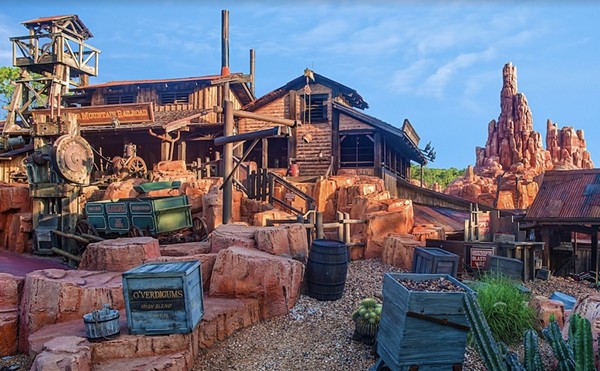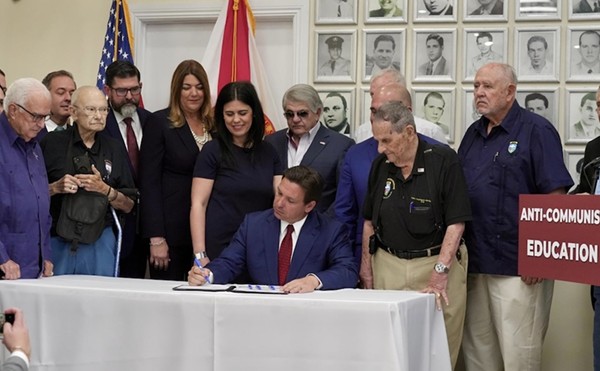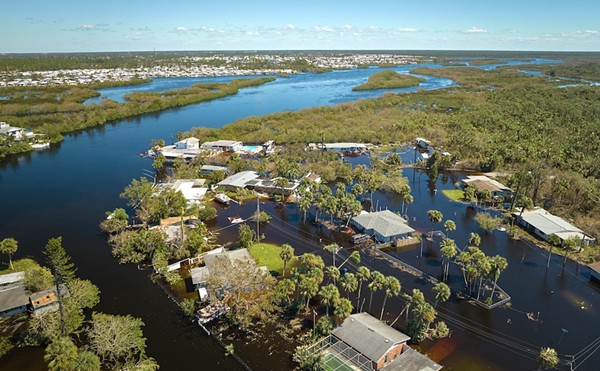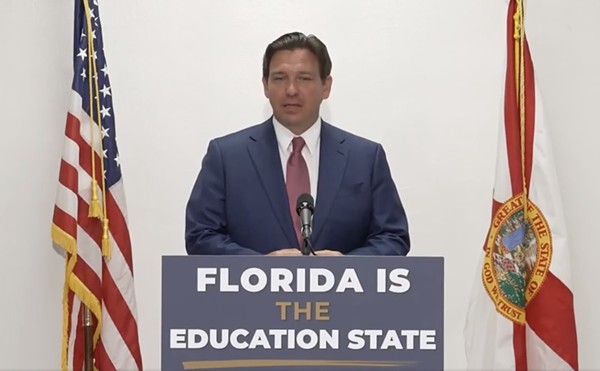A self-described "Florida cracker," Jay Zembower remembers a time when he and his friends could ride their horses from Seminole County down the Econlockhatchee River and through the wilderness to Deseret Ranches. White-tailed deer, alligators, wild turkeys, gopher tortoises, sandhill cranes and black bears roamed through areas of pine flatlands, oak hammocks and lush foliage. For fun, the rural community held cattle drives with covered wagons, camping on the trail alongside the mosquitos.
"You can't do that now," Zembower, of Chuluota, says. "That old Florida is evaporating quickly."
And as those pockets of wild green diminish, so do once-respected boundaries between the new Florida and the one that was. Next week, the Orange County Board of Commissioners will make decisions on future land use and zoning regulations for two developments – "The Grow" (Lake Pickett South) and "Sustany" (Lake Pickett North) – that will influence the character of the region east of the Econ River for the next generation.
Just off Colonial Road, the Grow is a 1,188-acre property where developer Dwight Saathoff plans to build 2,078 residential units on about 835 acres. The plan includes a farm, community gardens, trails, a community park and 292 acres of open space. The Sustany parcel, which stands at 1,418 acres, is above the Grow and closer to the Econ, and developer Sean Froelich wants to build 1,999 residential units on about 1,000 acres. The plans for Sustany also include a potential bridge that will cross the river, which is a sensitive environmental area. Currently, the county's rules covering that land limit development to one home for every 10 acres, which would mean less than 280 houses in that acreage. Developers have proposed rewriting those rules.
The projects have drawn fierce opposition from some of east Orange County's rural residents, who see their way of life under attack.
Emily Bonilla, founder of the group East of the Econ, lives nearby on a six-acre plot with a small farm. She moved here with her husband to raise their two sons among the goats and the chickens, away from the high-rises of the city. Now, she's fighting against developments she says will add urban sprawl and traffic to the already congested roads. The fight partly inspired Bonilla to run against Orange County Commissioner Ted Edwards for his District 5 seat. Edwards has said in the past that Orange County is an "urban county."
"Should we do what Seminole County did and just kind of lop off part of the county?" he said to the Orlando Sentinel last year. "I don't want to artificially say we're going to cut the line at the Econ; to me that doesn't make good land-use practice."
Bonilla says more homes in the area would increase the pollution going into the watershed and affect the animals in the wildlife corridor along the river, including black bears.
"My sons ask me, 'Mom, where are the animals going to live?'" she says. "At their age, they have enough common sense to talk about this issue that hasn't been addressed by the county."
Bonilla and her neighbors have also been joined in their opposition by Seminole County commissioners, Oviedo City Council members, the League of Women Voters of Orange County and the Sierra Club of Central Florida. Marty Sullivan of the League of Women Voters says as a fifth-generation Floridian, he doesn't think Sustany or the Grow are what we should do with our natural lands.
"The biggest threat to our bears, our panthers, our eagles, our skinks, our ibises is loss of habitat," he says. "We don't want to give that up, I believe, and further endanger our natural lands by turning it into another suburb."
But not every resident is completely opposed to the developments. Zembower, representing the Lake Pickett Woods Homeowners Association and three other representatives for community associations near Lake Pickett, came out in favor of the Grow – and against Sustany – earlier this month in a Sentinel op-ed.
Zembower says he's been fighting to keep the area rural for about 25 years and realized that whether he was on board or not, the area would be developed. He and a group of neighbors talked with Saathoff, the developer for the Grow. Saathoff was willing to discuss keeping the area rural, increasing buffers and reducing the density. Zembower says Saathoff agreed to a rare covenant and deed restriction on the project that goes with the land. Sustany declined to negotiate a similar agreement, he says.
"There's some people who don't want any development at all, which we respect, and I think we'd all love to see it stay how it's been," he says. "The problem is we've been doing this for a long time, and the appetite for development is as ripe as it's ever been in that corridor. We thought, if we don't sit down with these developers in good faith, we're going to end up with different house designs with a total disregard to any transitioning or rural flavor."
Still, Bonilla and other residents aren't going down without a fight. East of the Econ is protesting the projects at 5 p.m. Wednesday, June 8, in front of the Orange County administration building on Rosalind Avenue.
"We work hard and we choose to live out here," she says. "I feel like it's being taken away beyond our control, and we didn't do anything wrong to deserve this."




















